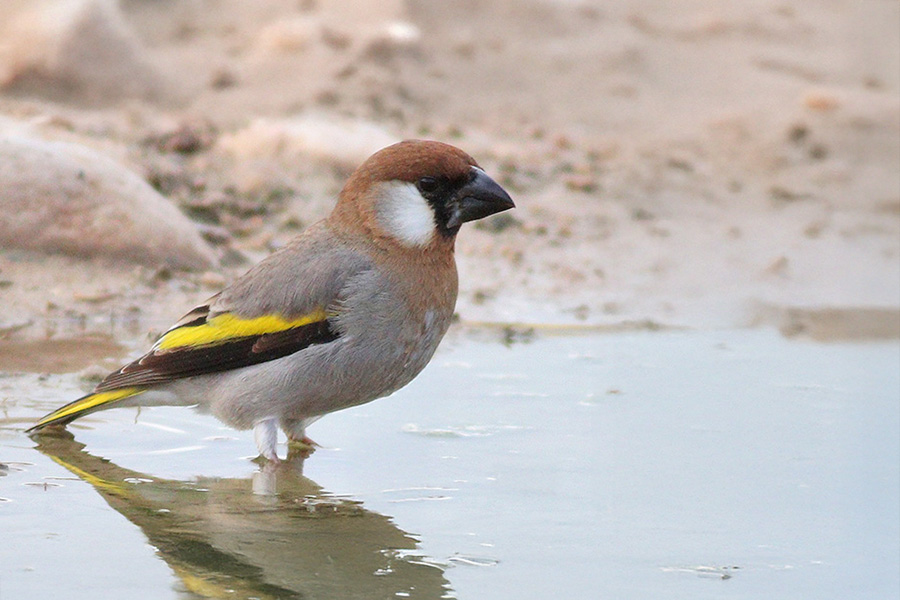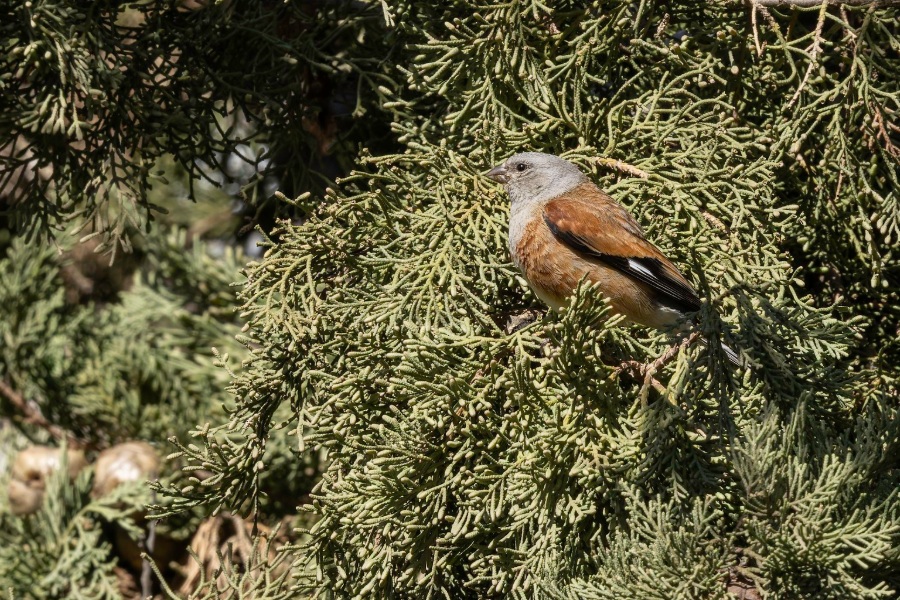Saudi Arabia
Saudi Arabia is rapidly emerging as the most exciting frontiers in Middle Eastern birding, offering the chance to explore spectacular desert landscapes, rugged mountain ranges, and remote wadis in search of the most coveted avian treasures of the Arabian Peninsula. This comprehensive Saudi Arabia birding tour targets all 20 Arabian Peninsula endemics including the striking Philby’s Partridge, Desert Owl, Arabian Woodpecker, Asir Magpie, Arabian Lark, Yemen Warbler, and the elusive Yemen Serin. Amongst many other specialties we hope to see are highlights like Sooty Falcon, White-cheeked Tern, Saunders's Tern, and Arabian Golden Sparrow. We’ll bird the dramatic the Asir Mountains down to the edge of the Red Sea, all during the late spring migration with raptors and passerines funnelling through.
Next Dates
16 May - 24 May 2027 (9 days)
Leaders:
Joachim Bertrands
Group Size Limit:
6
Single Room Supplement: $
400 USD
Deposit: $
750 USD
Price: $
4800 USD
Add a Title
Leaders:
Joachim Bertrands
Group Size Limit:
Add a Title
Single Room Supplement: $
TBD
Deposit: $
TBD
Price: $
TBD
Add a Title
This is a small group tour with a maximum of three participants in each vehicle, and the price includes both domestic flights. Entry to Saudi Arabia now requires only a simple online eVisa application for most nationalities. While previously there were laws about what women were allowed to wear in the country, these have been relaxed since 2019 and typical birding attire is acceptable for foreigners.
Accommodation:
All comfortable hotels.
Walking difficulty:
Mostly easy, a couple of longer walks up desert wadis if we cannot find some of the targets.
Tour cost includes:
All accommodation, main meals, drinking water, internal flights (as stated in itinerary), overland transport, tips to local drivers and guides, travel permits, entrance fees, and guide fees.
Tour cost excludes:
Flights before and after the tour start/end, visa, travel insurance, tips to tour leaders, laundry, drinks, and other items of a personal nature.
Day 1: Early morning arrivals into Riyadh International Airport (RUH), from which we will heard north into the sparsely-vegetated desert plains. Our primary target this morning will be Arabian Lark, perhaps the most difficult endemic on the peninsula. After searching until lunch (hopefully with success), we will head back to the airport and fly onwards to Abha.
Day 2: We explore juniper and acacia woodlands on the Sarawat Escarpment, giving our first chances for many of the endemics. These are likely to include Arabian Partridge, Arabian Woodpecker, Arabian Wheatear, Arabian Sunbird, Yemen Thrush, Yemen Warbler, Yemen Linnet, and Arabian Serin. There are also a couple of slightly more widespread species like Tristram's Starling, Blackstart, Palestine Sunbird, Arabian Warbler, and White-spectacled Bulbul. At dusk, we search for Montane Nightjar and Plain Nightjar, plus Arabian Scops-Owl and Arabian Eagle-Owl.
Day 3: Birding the cliffs and plateau around Habala for Rufous-capped Lark, Buff-breasted Wheatear, and Yemen Serin. Descending toward the Red Sea, we’ll target Arabian Golden Sparrow in the lowland acacia zone, plus Nile Valley Sunbird. Coastal mangroves contain "Red Sea" Collared Kingfisher, "Mangrove" Abyssinian White-eye, and the intruiging “Mangrove” Common Reed Warbler. Around Sabya at dusk we’ll try for Arabian Babbler and Black Scrub Robin, followed by Nubian Nightjar after dinner.
Day 4-5: Along the coast, we will be searching primarily for Saunders's Tern, along with Crab-plover. Abdim’s Storks, sometimes nest on light poles in this area, quite a sight! One of these days we will take a boat trip to the Farasan Islands, where White-cheeked Tern is easy to see, along with recently-arrived Sooty Falcon! We should obtain excellent views of White-eyed Gull, Sooty Gull, and Red-billed Tropicbird before returning to shore and heading inland to Abu Arish. After dark, we will have a more chances for some of the previously mentioned nightbirds.
Day 6: Departing predawn, we will ascend into the Sarawat Highlands and stop in the Bihan area, one of the last strongholds of the Critically Endangered endemic Asir Magpie. Afterwards we continue to Tanomah, where we can try for Desert Owl tonight.
Day 7-8: We start at a stakeout for Philby’s Partridge before travelling to Al Bahah for further exploration of the cool high-elevation forested slopes and mountain ravines, aiming for any missing specialties. In particular, this is the best area for Arabian Grosbeak and Arabian Waxbill, which are likely to be our final Arabian endemics! We could also spot Little Rock Thrush and Streaked Scrub Warbler.
Day 9: Final morning birding for any remaining targets before flying back to Riyadh International Airport (RUH) where the tour ends this evening.
NOTE: This tour can be linked with Somaliland & Djibouti in 2027.













